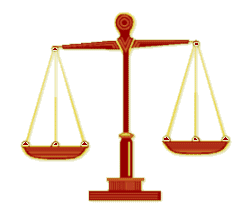Cause of action facts for kids
In simple terms, a cause of action is the legal reason why someone can start a lawsuit against another person or group. It's like having a valid reason, based on facts and laws, to ask a court for help. This help might be to get money, property, or to make someone do what they are legally supposed to.
When someone starts a lawsuit, they are called the plaintiff. The plaintiff uses a cause of action to explain to the court why they believe they have been harmed and what they want the court to do about it. The legal paper that officially starts a lawsuit is often called a Complaint in the United States or a Statement of Claim in England. This document tells the court who is involved, what happened, and what the plaintiff is asking for.
Starting a Lawsuit
To begin a lawsuit, the plaintiff must clearly state the facts that support their cause of action in the Complaint. This document explains the legal problem the plaintiff believes they have faced and what kind of help they want from the court.
Sometimes, one situation can lead to several different causes of action. For example, if someone breaks a promise (a contract) and also harms you physically, that could involve two different causes of action. While it might seem easy to file a Complaint, it's important to do it correctly. If not, the person filing the lawsuit might lose their case because of small mistakes.
Types of Causes of Action
There are many specific types of causes of action. They often fall into categories like:
- Contract-based actions: These are about agreements or promises that were broken. For example, if someone agreed to build a treehouse for you but never did, that could be a breach of contract.
- Statutory causes of action: These are based on specific laws passed by a government.
- Torts: These are about civil wrongs that cause harm to someone. Common examples include:
* Assault: When someone makes you fear you are about to be harmed. * Battery: When someone physically harms you without permission. * Invasion of privacy: When someone interferes with your right to be left alone. * Fraud: When someone tricks you on purpose to gain something.
For each type of cause of action, there are specific "elements" or points that the plaintiff must prove to win the case. For example, to prove a claim of negligence (carelessness that causes harm), the plaintiff must show:
- The other person had a duty (a responsibility) to act carefully.
- They breached (broke) that duty.
- Their breach directly caused the harm.
- The plaintiff suffered damages (actual harm or loss).
If the Complaint doesn't include enough facts to support every one of these points, the court might dismiss the case. This means the lawsuit would end before it even really begins.
Responding to a Lawsuit
When a plaintiff files a Complaint, the person or group being sued is called the defendant. The defendant must file an "Answer" to the Complaint. In their Answer, the defendant can agree with or deny the claims made by the plaintiff.
The defendant can also include their own causes of action against the plaintiff. These are called counterclaims. For example, if the plaintiff sued the defendant for breaking a contract, the defendant might counterclaim that the plaintiff also broke a part of the same contract.
Finally, the Answer can include "affirmative defenses." These are reasons why the defendant believes they should not be held responsible, even if the plaintiff's claims are true. Most of these defenses must be brought up right away, or they might not be allowed later in the case.


